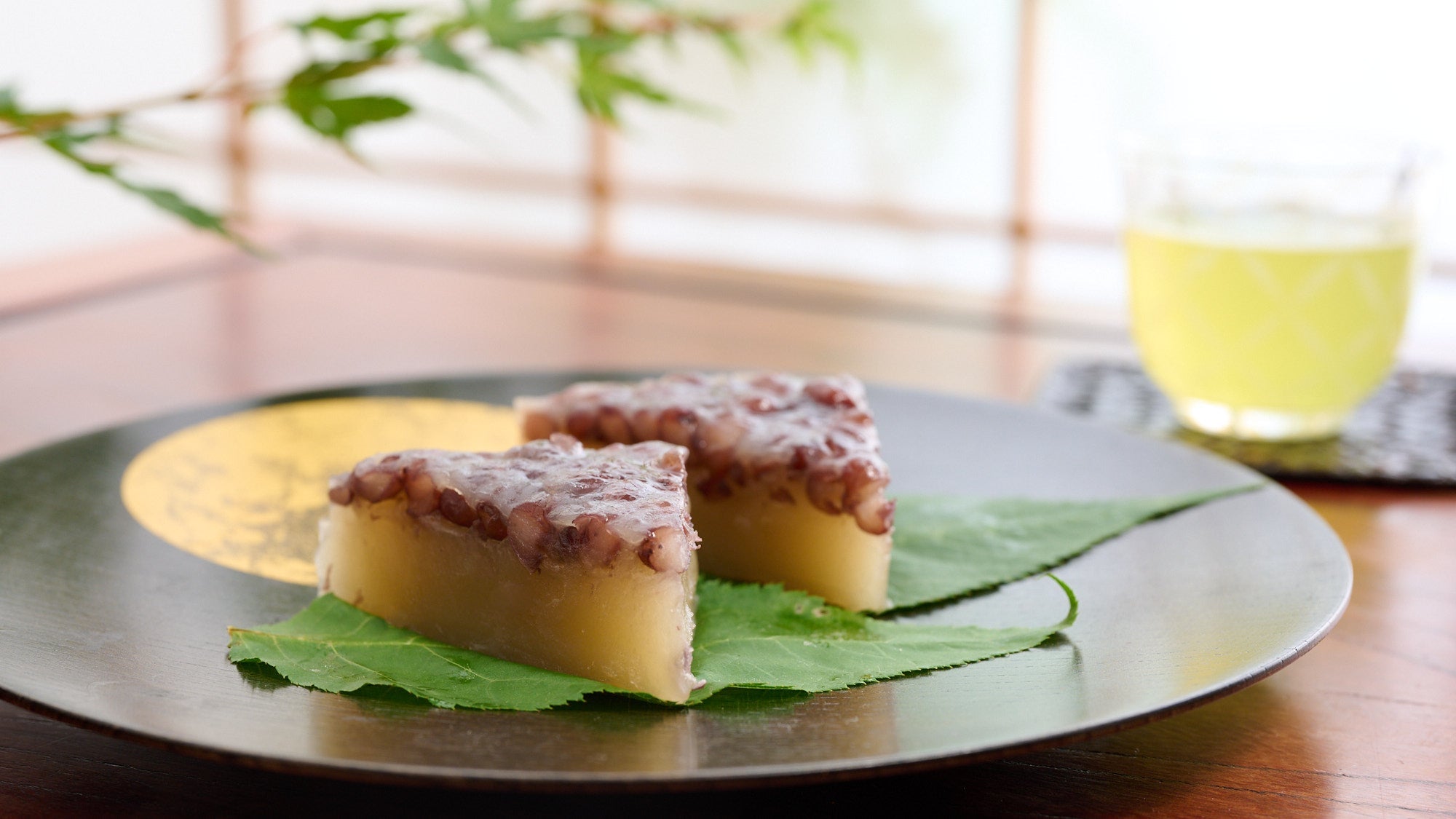
A Tasty Tour of Japan's Seasonal Summer Sweets
Written by Team MUSUBI
The blessings of Japan’s four seasons have long brought richness to people’s lives and food culture. Wagashi, traditional Japanese sweets, are no exception.
Shaved ice that looks refreshingly cool, delicate summer sweets, and nerikiri confections shaped with motifs of the Japanese summer—these are the wagashi that gently bring coolness to the height of summer.
What further enhances their beauty is the presence of carefully selected vessels: cool glassware, lustrous lacquerware, and delicately crafted small plates and bowls. These harmonize with the wagashi, inviting one into a richly sensory experience of summer, savored with both the eyes and the palate.
So read on and learn about the wagashi that symbolize Japanese summer, and ideas for savoring the essence of the season with each bite of these Japanese sweet delicacies.
Table of contents
Minazuki – Triangle Rice Cake with Red Beans
Minazuki is a traditional Japanese confectionery that for centuries has been enjoyed at the end of June. It embodies the wish for good health and protection from illness as people prepare for the summer heat.
In Japan during this season, a ritual is held called Nagoshi no Harae, where people give thanks for their safety over the past six months and pray for continued well-being. On this occasion, triangular Minazuki is offered—its white base of uiro, a kind of mochi rice cake, represents ice, while the red color of adzuki beans is believed to ward off evil spirits and bring a sense of seasonal relief.
There are also variations made with brown sugar or matcha, offering a richer flavor while preserving the essence of Japanese tradition. The chewy texture of uiro and the gentle sweetness of the beans provide a soothing treat, offering comfort on warm days.
Waka Ayu – Sweetfish-Shaped Cakes

Waka ayu is a traditional Japanese sweet shaped like an ayu (sweetfish) swimming energetically in a river at the start of summer. It consists of soft, fluffy, castella-style sponge cake wrapped around chewy, tender gyuhi (a type of mochi). Its charming appearance and cute fish shape bring a refreshing sense of summer.
The origin traces back to chofu sweets—another kind of castella-wrapped mochi—from Okayama, which later gained popularity in Kyoto and Gifu, regions known for traditional ayu fishing. Today, waka ayu is a beloved local specialty in these areas.
Though the basic recipe is simple, shops offer unique variations—some with thicker or thinner sponge, others with different fillings like sweet white bean paste or smooth red bean paste. Each maker adds a creative touch, making waka ayu a delightful summer gift or tea-time treat.
Kakigori – Japanese Shaved Ice
Kakigori, or shaved ice, is a symbol of Japanese summer. When flags with the red character for "ice" begin emerging around town, it’s a beloved sign that the season has arrived.
This simple sweet, made by shaving ice and pouring syrup over it, offers a welcome coolness on hot days. Colorful syrups in flavors like strawberry, soda, and mango delight people of all ages.
Recently, specialty kakigori shops have grown in cities like Tokyo, serving visually stunning creations topped with fruit purees, house-made syrups, shiratama (rice flour dumplings), or condensed milk—true edible art.
Kakigori made with natural ice, slowly frozen from pure spring water, is especially popular for its soft texture and smooth, delicate taste. Many people line up at famous shops to enjoy this clear, refreshing flavor.
Kakigori can also be enjoyed at home on hot, humid days. Just combine store-bought ice and syrup and add your favorite toppings for an easy-to-make taste of summer.
Mizu Yokan – Soft Japanese Red Bean Jelly
Mizu yokan is a chilled Japanese confection that is cherished as a summer classic. It is made by heating smooth red bean paste together with agar and sugar, then cooling the mixture until it sets. Rich in moisture, mizu yokan is known for its moist, silky texture and subtle sweetness. Its smoothness makes it easy to eat, and it is valued for the refreshing sensation it brings during the sweltering summer months.
The origin of mizu yokan is believed to date back to the mid-Edo period (1603–1868 CE). At first, it was sometimes served as part of New Year’s osechi dishes. From the Meiji period (1868–1912 CE) onward, with advances in preservation technology, mizu yokan became established as a summer sweet and came to be enjoyed widely by the general public.
Mizu yokan is also relatively easy to make at home. Plant-based agar is dissolved in hot water, mixed with smooth red bean paste and sugar, poured into a mold, and chilled until firm. Its melt-in-the-mouth softness and clean, refreshing aftertaste continue to make it a beloved taste of summer for many people today. Please check this blog for the recipe.
Anmitsu – Jelly Cubes with Red Bean Paste and Fruit
Anmitsu is a treasure box of delicious flavors. The word "an" refers to sweet red bean paste, and "mitsu" means syrup. Just before eating, it is enjoyed by pouring rich black sugar syrup (kuromitsu) over the ingredients. The dish typically features a combination of sweet red bean paste, agar jelly, gyuhi, fruits, and boiled red peas, all served together in a bowl and topped with thick kuromitsu.
It is said that anmitsu was created around 1930 at the long-established Ginza Wakamatsu in Tokyo. At that time, the shop served mitsumame, a dessert made with red peas, agar jelly, gyuhi, and fruit. In response to regular customers requesting “something sweeter,” they added sweet red bean paste and syrup, giving birth to what is now known as anmitsu.
Today, many variations of anmitsu have emerged. In addition to the classic agar anmitsu and fruit anmitsu, there are also other varieties such as shiratama anmitsu, made with shiratama dango (rice flour dumplings), and cream anmitsu, topped with whipped cream.
With its combination of flavors, ingredients and nutruients—fiber from the agar, minerals from the red peas, and vitamins from the fruit—anmitsu is considered a luxurious dessert.
Summer Motif Nerikiri – Sculpted Bean Paste Sweets
The delicate wagashi known as nerikiri or nerigashi is made by carefully kneading white bean paste together with gyuhi, creating a smooth and moist texture. The gentle sweetness of the bean paste softly spreads in the mouth the moment it is tasted.
Nerikiri is not merely a sweet treat. Each piece is the result of an artisan’s sensitivity and skill, crafted with themes that reflect the natural scenery or seasonal events at the time.
Sculpted into forms as beautiful as tiny sculptures, nerikiri for summer often come in the shape of seasonal flowers like dianthus, morning glories, and irises. Goldfish, fireworks, and other iconic symbols of Japanese summer are also delicately portrayed, bringing a sense of coolness and calm to those who behold them.
The beauty of their colors truly makes them a form of “wagashi art,” allowing people to experience the changing seasons through all five senses and feel the spirit of Japanese culture. Their small, easy-to-hold size is another charm, and when served alongside a cool, elegant tea set, they create a refined moment that delights both the eyes and the palate.
Mizu Manju – Clear Jelly with Adzuki Filling
Mizu manju is a chilled Japanese sweet in which smooth red bean paste is wrapped in a dough made from kudzu starch and bracken starch (warabi-ko). It is said that mizu manju originated during the Meiji period.
In Ogaki, Gifu Prefecture, known as the "city of water," households made use of abundant underground water to cool vegetables and fruits using ido-bune (well boats), which served as natural refrigerators. In this setting, the idea arose: "If we can chill vegetables and fruits, why not also a cold sweet for summer?" This led to the creation of mizu manju.
Typically, the clear dough—made from kudzu starch, warabi-ko, or agar—is used to enclose fillings such as smooth red bean paste, yuzu-flavored bean paste, or matcha bean paste, and is served chilled. Its jiggly texture and refreshing coolness offer a sense of relief during hot and humid summer days.
At first glance, mizu manju looks as clear as crystal, with a jewel-like appearance. One of its unique charms is that the bean paste inside can be faintly seen through the delicate translucent skin.
Mizu manju pairs perfectly with cold green tea or roasted hojicha, and is cherished as a summer tea sweet for welcoming and entertaining guests.
We hope you've enjoyed discovering the delightful array of seasonal treats we cherish during the scorching summer months in Japan. Summertime confections extend beyond simple, cool indulgence: they are an expression of the flourishing season, a custom-crafted culinary representation filled with tradition.
In Japan, each season offers its own delectable flavors to look forward to. Adding an extra touch of sweetness makes a culinary experience all the more pleasurable. We hope that you have the opportunity to savor the delights of the summer and of the forthcoming seasons as you continue your journey into Japanese cuisine.








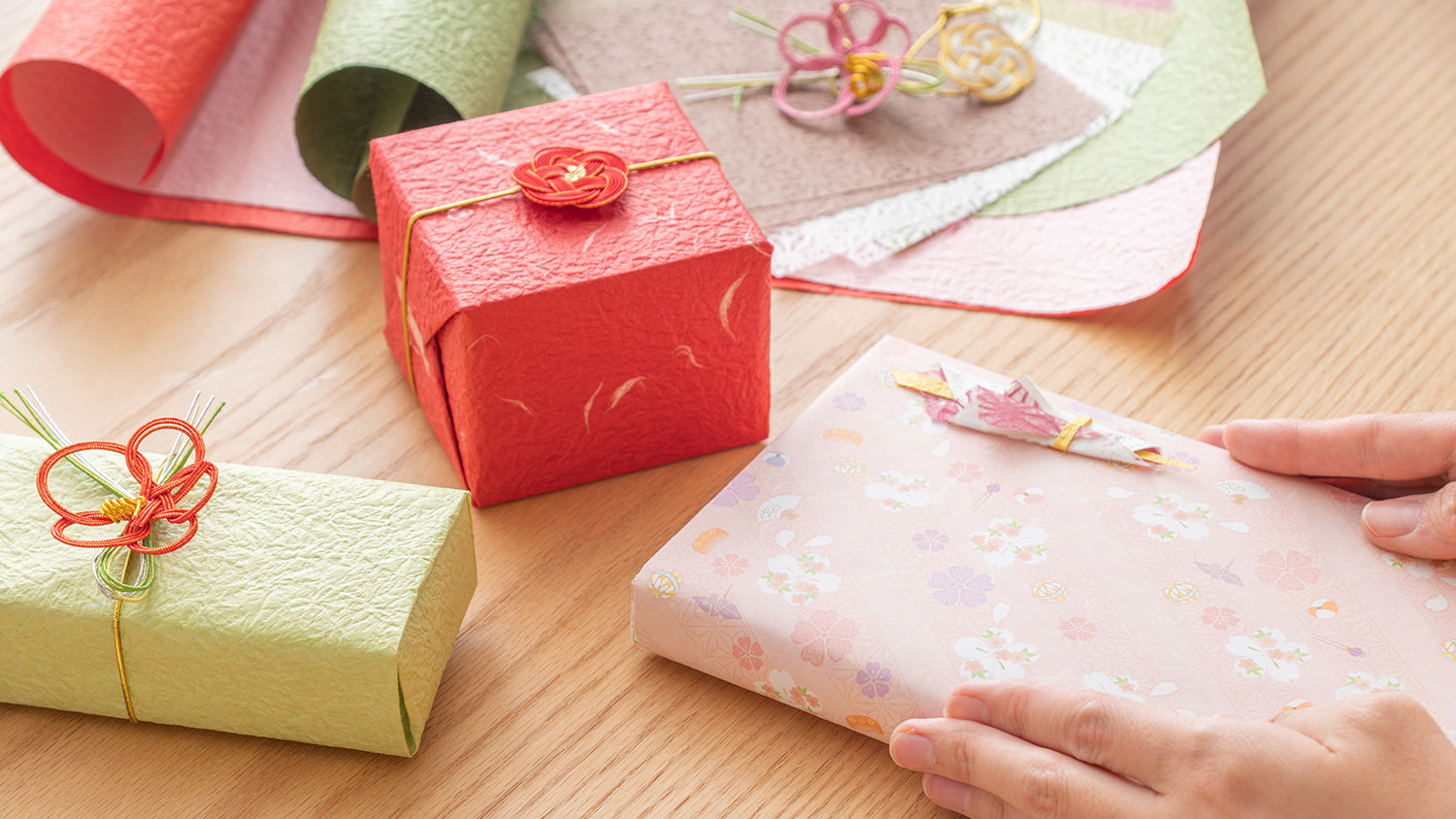

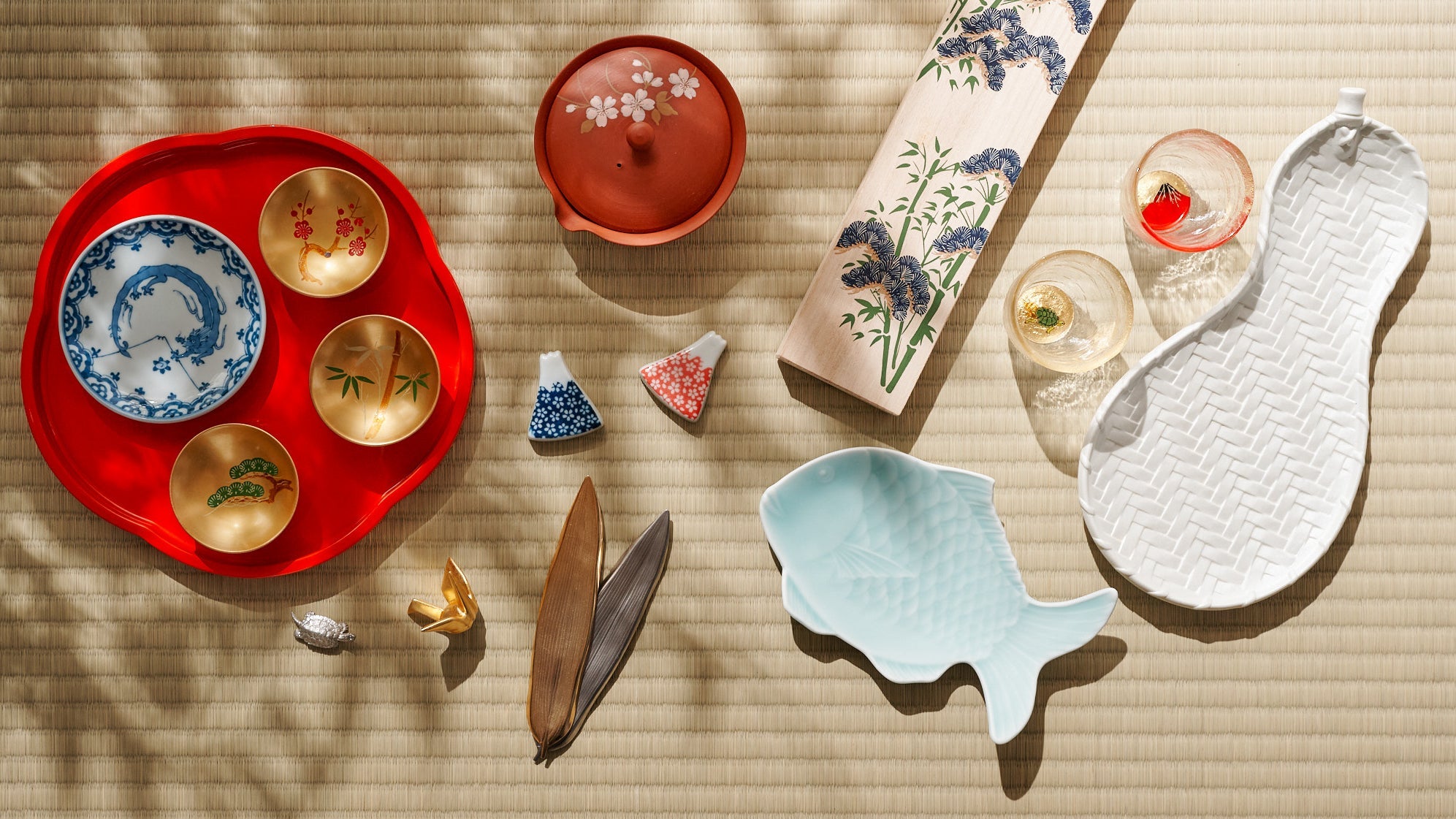
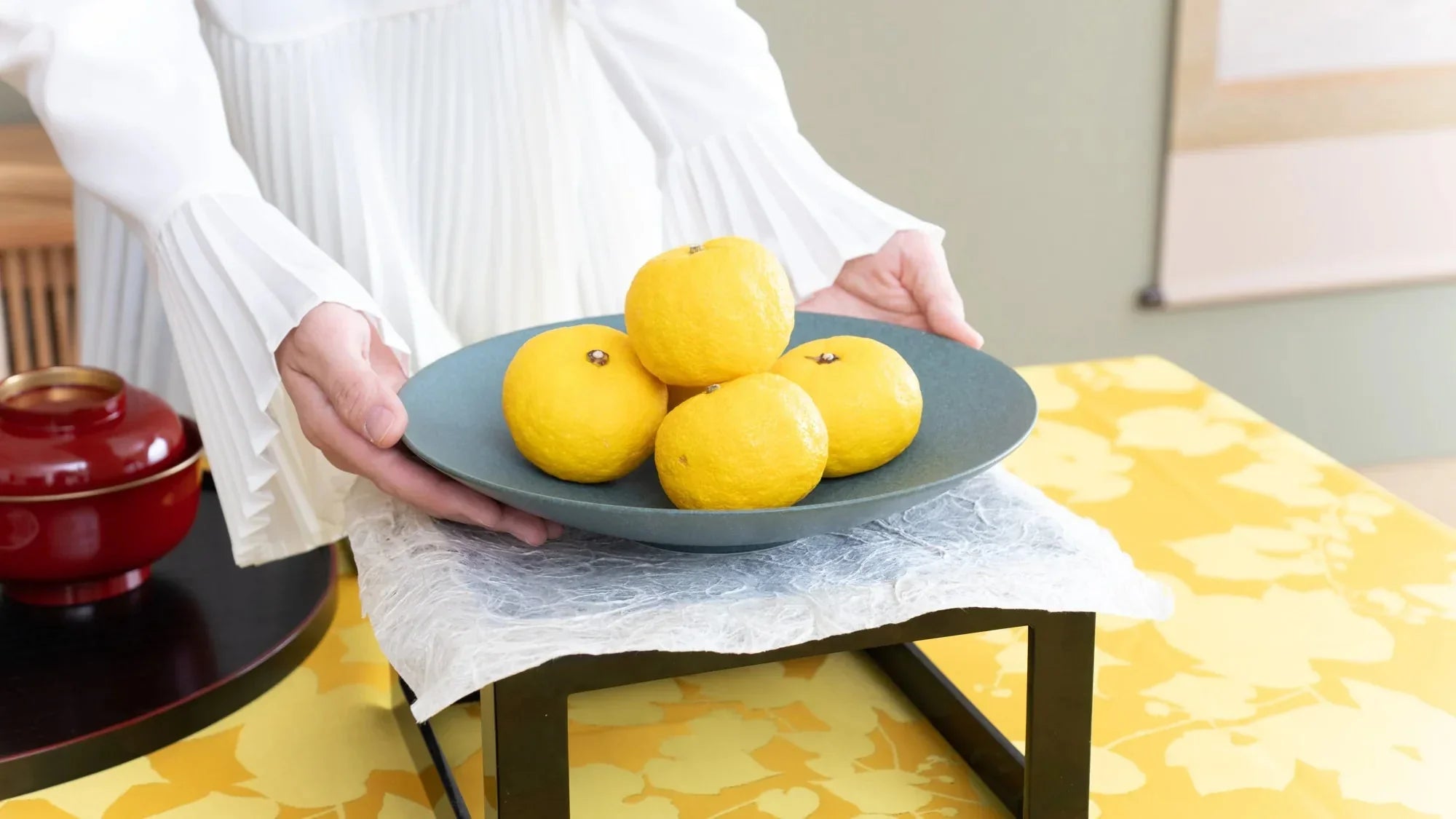
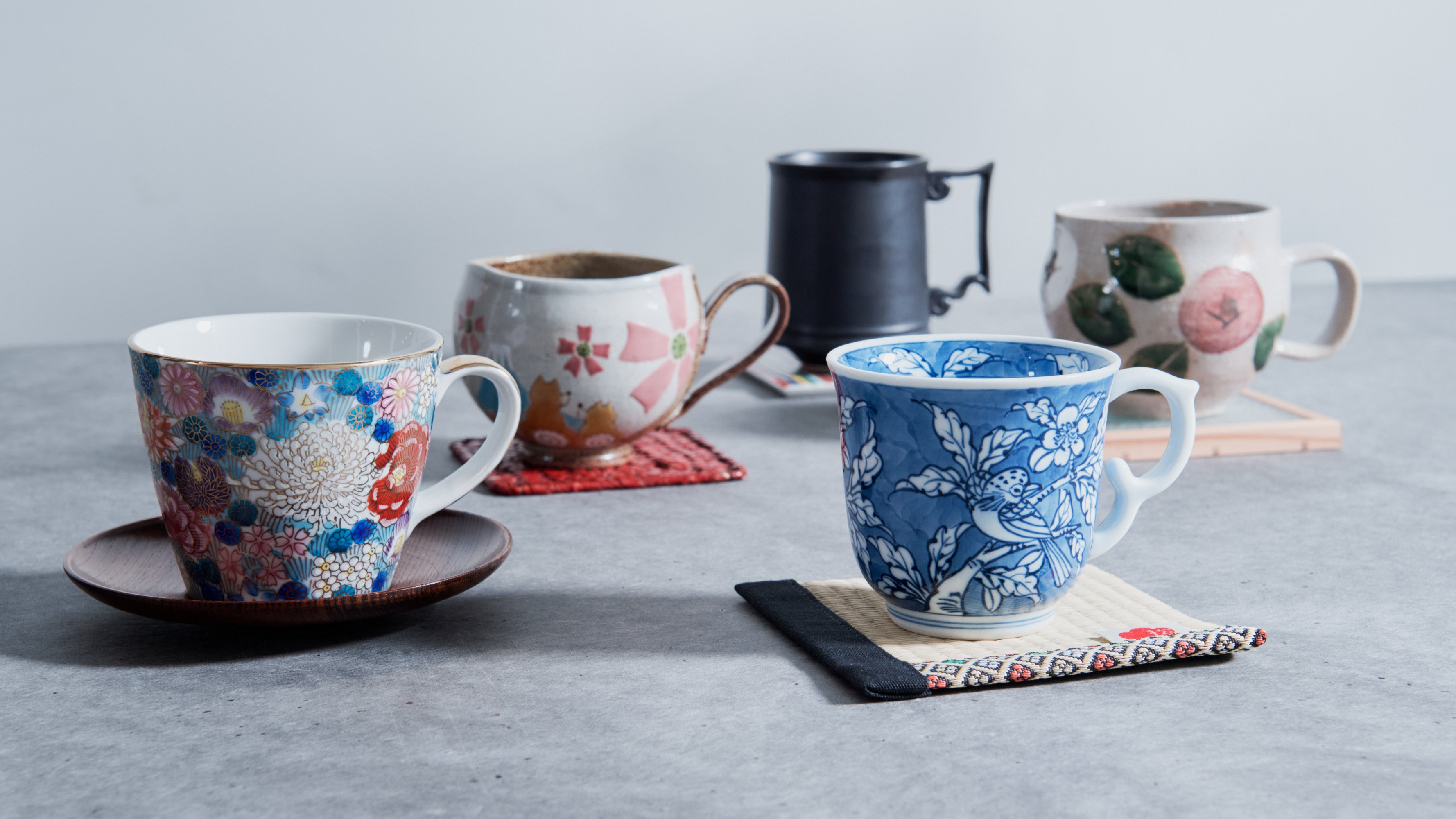
Leave a comment
This site is protected by hCaptcha and the hCaptcha Privacy Policy and Terms of Service apply.